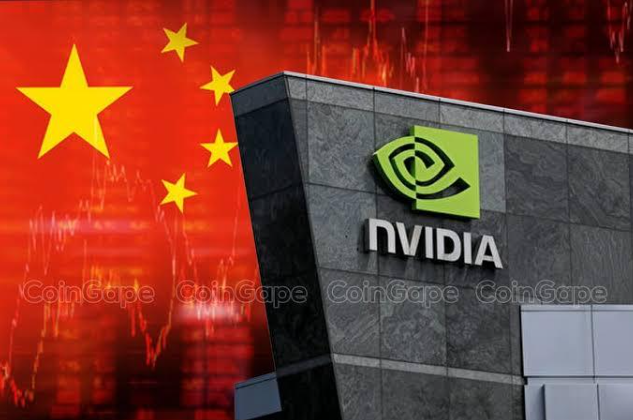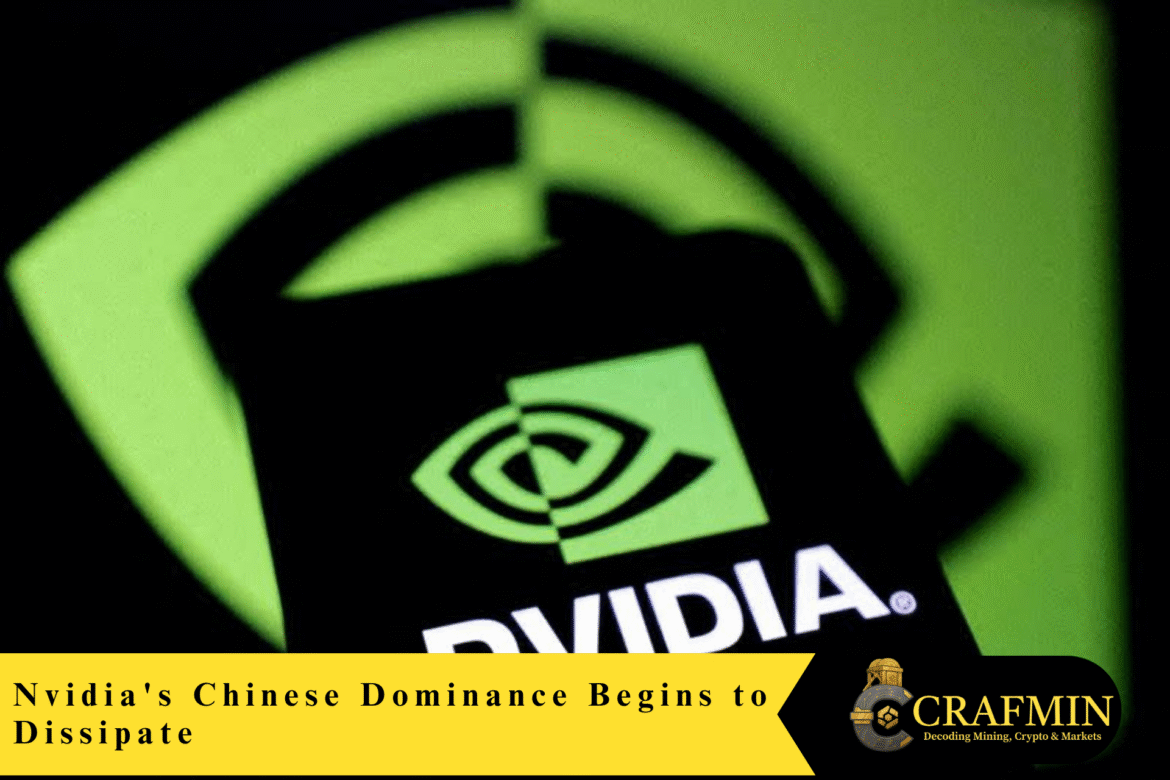Nvidia, the runaway champ in China’s AI chips to this point, is finally beginning to let its grip slip. Aside from the fact that it had gained US regulators’ approval to sell once more its revamped H20 AI chips to customers in China, the firm’s grip is increasingly loosening.

Nvidia’s Grip on China’s AI Market Weakens ( Image Source: CoinGape )
Analysts predict China market share going down for Nvidia, to 66% in 2024 from 54% in 2025. That is not a downturn, that is an awakening call. Chinese technology companies are picking up pace at a voracious pace driven by compulsion, policy change, and strategic creativity.
No longer market share, now national interest is at stake.
Homegrown Challengers Get Their Act Together
Local giants such as Huawei and Cambricon are leading a charge that’s changing the landscape. Huawei’s Ascend processors and Cambricon’s AI-focused chips are not only improving, they’re now being adopted in high-demand sectors like autonomous transport, cloud computing, and smart cities.
Why the hurry? A mix of geopolitics and business imperative. China has long been trying to break free from foreign chips, and recent export controls just accelerated the process. The result: a home-grown chip ecosystem.
Predict that more than half of China’s AI chip market, some 55%, will be accounted for by domestic players by 2027.
Political Pressure Mounts for Nvidia
Nvidia is in the heads of more than just businessmen. The firm was invited to sit down by Chinese regulators about what officials termed “national security issues” in recent times. What are they worrying about? Fears Nvidia chips possess backdoors, or hidden entry points, which leave data vulnerable to security attacks.
Even as Nvidia has distanced itself from any impropriety and is still in line with American law, the message Beijing was sending was clear. It’s straightforward: Foreign applications of AI chips, specifically chips with this type of geopolitical baggage associated with them, will no longer be business as usual from now on.
That pressure adds extra spin to Nvidia’s already tense spot in China.
Sure, Nvidia will make money in China for some years to come, but the end is in sight…..
Chinese AI Firms, Chipmakers Form Alliance To Ditch Foreign Tech
Chinese developers of large language models and artificial intelligence chip manufacturers including US-sanctioned Huawei,… pic.twitter.com/vfoTcXfHwm
— Richard Turrin (@richardturrin) July 31, 2025
The H20’s Revival Isn’t Changing the Narrative
The H20 chip readoptions under U.S. control were meant to see Nvidia keep its Chinese clients. So far, the introduction has been unable to spark the revival the company might have hoped for.
One of them is perception. Aside from how the H20 is performing, Chinese buyers more than ever are willing to sacrifice short-term specs for long-term autonomy. They don’t mind so much being able to carry the biggest chip of the moment and are concerned instead about future-proofing their own companies from looming sanctions.
In short, the H20 is no longer tipping the scales, it’s no longer in an increasingly complex, increasingly independent market.
A Bigger Fight: Beyond Business
It is not just chips. It is a part of a larger reengineering of international tech. America is also trying to restrict exports of cutting-edge semiconductor technology in an effort to contain China’s recent technological breakthroughs in artificial intelligence. China is retaliating by showering billions of dollars on indigenous innovation, such as grants, subsidies, and tax credits to local chip makers.
The stakes are worldwide. It’s not a corporate battle, its a battle for technological supremacy.
For Nvidia, that would mean battling corporate competitors and a government-led push to end foreign chip dependence in all industries.
The Future Is Fragmented
If trends continue, China will be the world’s first major economy to boast a nation-leading AI system fueled by largely all domestically-designed chips. That would be a huge shock, not just for

